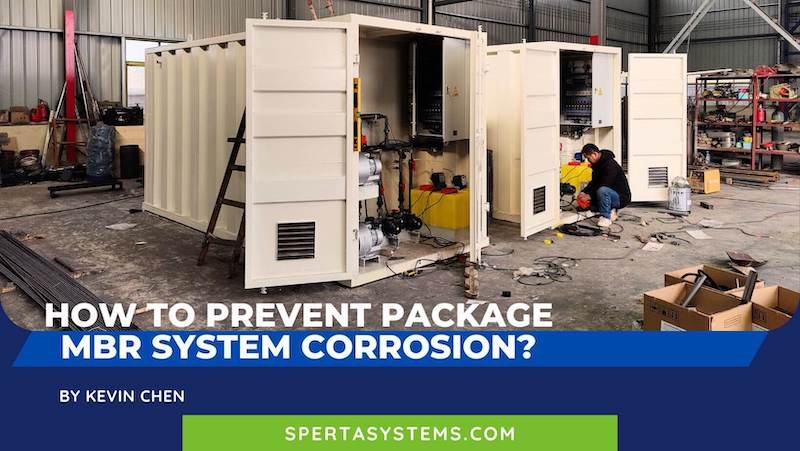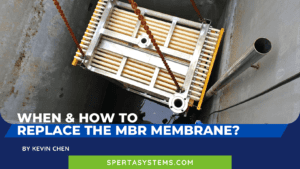Packaged MBR (Membrane Bioreactor) systems are integral to modern wastewater treatment processes, providing an efficient and compact solution for wastewater treatment. However, like all equipment that comes into contact with water and various chemicals, they are susceptible to corrosion. Effective corrosion prevention measures are necessary to ensure MBR systems’ llifespan and optimal performance. The following are key corrosion prevention strategies for packaged MBR systems:
1. Material Selection:
The selection of materials for an MBR system is vital for its longevity and resistance to corrosion. Carbon steel, a cost-effective option, requires protective treatments to combat rust. Stainless steel, especially the 316L grade, offers inherent corrosion resistance due to its chromium content. Meanwhile, FRP, a non-metallic composite, stands out for its chemical resistance and lightweight properties, making it ideal for consistent exposure to wastewater.
2. Protective Coatings:
Applying suitable protective coatings is essential to safeguard the Package MBR System from corrosion. Epoxy coatings offer robust resistance against water and chemicals, while polyurethane coatings protect against abrasion and UV rays. Zinc coatings for galvanizing steel provide sacrificial protection, ensuring the underlying steel remains unharmed. The choice of coating should align with the system’s environmental exposure, ensuring optimal protection and longevity.

3. Regular Maintenance and Inspection:
Routine checks and maintenance can help identify and address early signs of corrosion. This includes visual inspections for discoloration, rust, or pitting and more advanced techniques like ultrasonic thickness measurements to detect underlying corrosion.
4. Optimal Operating Conditions:
Ensure that the system operates under conditions that minimize corrosion risks. This involves monitoring and maintaining appropriate pH levels, temperature, and chemical concentrations. A neutral pH, for instance, can help prevent both acidic and alkaline corrosion.
5. Cathodic Protection:
Cathodic protection can be employed for systems especially vulnerable to corrosion. This method uses a sacrificial anode, a metal more reactive than the system’s material, to corrode in place of the system, thus offering protection.
6. Water Quality Monitoring:
Regularly monitor the quality of the water being treated. High concentrations of certain chemicals or salts can accelerate corrosion. Implementing pre-treatment processes to remove or neutralize these agents can be beneficial.
7. Effective Sealing:
Ensure that all joints, seams, and interfaces are effectively sealed to prevent the ingress of potentially corrosive substances.
8. Training and Awareness:
Ensure that the personnel operating and maintaining the MBR system are well-trained and aware of the importance of corrosion prevention. They should be equipped with the knowledge to identify potential issues and take corrective actions promptly.

In conclusion, corrosion prevention in Package MBR Systems ensures their lifespan and optimal performance. Understanding the risks and implementing a combination of the above strategies can significantly enhance the system’s resilience against corrosion.
The above are the details of preventing corrosion in the package MBR system. If you still have questions about the membrane bioreactor or package MBR system, don’t hesitate to contact SPERTA.
Shanghai SPERTA Environmental Technology Co., Ltd. has specialized in producing water treatment products for many years. The company has the core technology of producing MBR membrane components. It has a high production capacity, aiming to build a high-quality brand of MBR production and sales worldwide. If you have any needs, please feel free to contact us.








